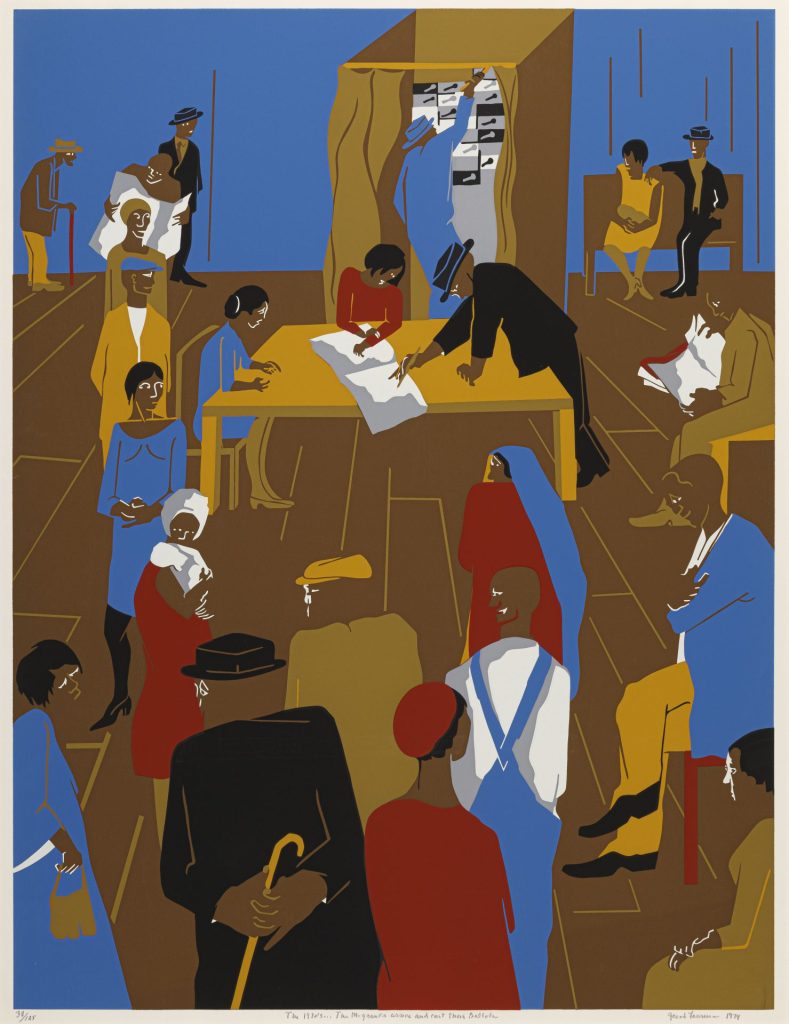
Jacob Lawrence, The 1920s…The Migrants Cast Their Ballots, 1974. Screen print. Gift of the Lorillard Corporation, Mr. Curtis H. Judge, President, 75.281. © 2022 The Jacob and Gwendolyn Knight Lawrence Foundation, Seattle/Artists Rights Society (ARS), New York.
On Election Day—November 5, 2024—the New Orleans Museum of Art is offering free museum admission to Louisiana residents who show their “I Voted” stickers from this year’s election.
The museum also invites visitors to reflect on this 1974 work by Jacob Lawrence, which continues themes the artist tackled in his famed “Migration Series” and represents a moment in the history of voting rights in the United States.
The 1920s…The Migrants Cast Their Ballots is currently on view in the museum’s second-floor Frederick R. Weisman Galleries.
Object Lesson: The 1920s…The Migrants Cast Their Ballots
Jacob Lawrence, one of the most prolific American artists of the 20th century, is celebrated for his vibrant portrayals of African American urban life and historical events. His style, which he called “dynamic cubism,” features crisp shapes, bright colors, and dynamic patterns, drawing inspiration from West African art, Mexican muralism, and the socially engaged traditions of “social realism.”
During the Great Migration—starting in the 1910s—millions of Black Americans moved from the South to the Northeast, Midwest, and Western United States. Here, Lawrence shows African Americans at a busy polling location—a particularly powerful scene given that many migrants left the American South to escape Jim Crow–era oppression, which included laws intended to suppress the votes of Black people.
Lawrence was born in Atlantic City, New Jersey, where his parents had migrated from the rural South, and spent his formative years in New York City’s Harlem neighborhood. At the Harlem Art Workshop, sponsored by the Works Progress Administration (WPA) in 1932, he studied under Charles H. Alston.
As the son of migrants, Lawrence’s work captures the spirit of the Great Migration, highlighting themes of struggle and resilience. He once said, “To me, migration means movement. There was conflict and struggle. But out of the struggle came a kind of power and even beauty.” Through his art, Lawrence tells a story of shared history and invites reflection on the universal themes of strength and endurance in the face of adversity.
—Simeneh Gebremariam, Curatorial and Programs Assistant